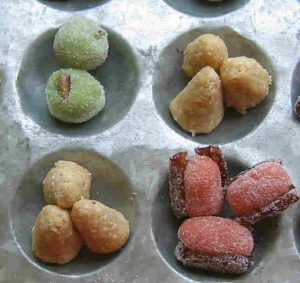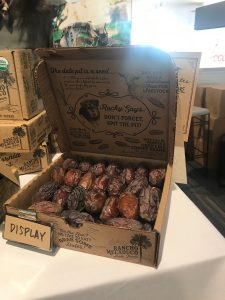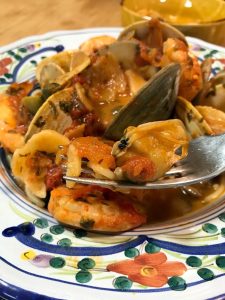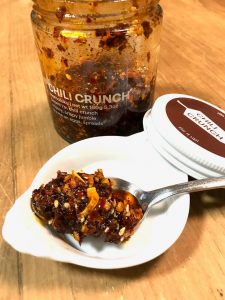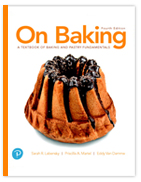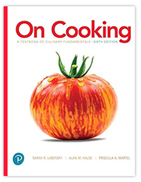Throughout the year, I scour food web sites and magazines, food companies and food retailers, trade journals and industry sources looking for patterns. And there are so many flavorful food trends for 2022. Those that interest me land in a few categories, truly new flavors, new or more widely available specialty ingredients, new ways of serving food or patterns of eating.
Here are some that stick out because I’ve been eating them already.
Superior Dried Fruits
Fresh and dried fruit satisfy our desired for natural sweetness in the diet. A couple of years ago, I sampled Rancho Meladuco dates at the Fancy Food Show in San Francisco. These dates with the size of a rancher’s thumb, so moist and sweet. None of this would be that surprising because the date harvest has just ended. What was surprising was learning that the company pack then freeze them. Under such storage, you always receive youi order in the perfect moist state. These are the kind of superior fat dates for stuffing with cheese, chorizo or almond paste as shown in the photo above. And they the best I have ever tasted.
Plant forward eating has a new name reflecting a slight twist.
Whole Food calls this reducitarianism, a tongue twister. They talk about a way of eating that reduces our consumption of dairy, meat and eggs without eliminating them completely. Instead, we are encouraged to seek out the best grass-fed, humanely-raised meats and poultry, wild seafood, and pasture-raised eggs and cheese from local farms to supplement a plant-focused way of eating.
This rings true in our household where we select produce first. Yesterday’s purchase of watercress, baby spinach, arugula and Belgian endive made the perfect salad to serve with grilled scallops from Rhode Island and a bowl of berries for dessert. There are fat zucchini, fennel and red bell peppers in the fridge perfect for roasting. Grilled vegetable and cheese panini, frittata with grilled veggies or a slender lamb shoulder chop with this medley will make a couple of meals.
Return to Quality Pasta
We debate the merits of eating pasta in our house. My position, supported by research in Italy, is that pasta, when cooked al dente and served in a modest portion as a separate course, constitutes healthy eating. (Charlie, who eats croissants and jam every morning, is concerned about eating too many carbohydrates, Dio mio.) I say 2 ounces of dry pasta from a good manufacturer, cooked properly ad dente leaving a slight chewiness belongs in a healthy diet.
It’s not a new understanding of how to serve pasta that is inspiring people to cook it more however. Rather, importers are bringing in a wider range of traditional and fanciful shapes into our markets.
Take cascatelli, the newest pasta shape. Former cook and restaurateur Dan Pashman sought out a shape that fit a fork and held more sauce. His three-year experiment resulted in this novel shape, which is often sold out for months at a time.
Quality manufacturing means using the best hard durum wheat extruded through brass dies, which give the surface of the pasta a fine texture. More sauce clings to pasta made using such machinery. Barilla’s Campanelli is shaped like a horn or bell flower, which captures chunky sauces in all its cervices. Among my favorite manufacturers is Di Martino, which makes dozens of traditional shapes such as percatelli, long tubes of spaghetti. Like bucatini, it has a hollow center great for thinner, light sauces. L’Ultimo Forno’s calamaretti, shaped like fat squid rings, are perfect with a seafood sauce rich with fresh squid, shrimp, clams and mussels as shown here.
More brands offer pasta from grains such as black rice, pumpkin seeds or red lentil flour many of which are gluten free such as Barilla’s lentil flour pasta.
Pasta satisfies our needs for comfort eating. Be inspired by the new shapes and flavors. And stick to 2 ounces dry pasta per person serving.
Return of Unusual Fruits
Hibiscus is back. It’s been popular in teas and beverages for its very tart, brilliant red color and slightly sweet aroma and taste. My first encounter with ii was in Jamaican Sorel, a traditional drink made with hibiscus, fresh ginger, sugar and spices. Its arresting red color is unmistakable. Whole hibiscus blossoms look smashing in a glass of champagne, prosecco of other sparkling drink with or without alcohol. Expect to see it in yogurt and fruit spreads where it will bring it color, flavor and acidity.
Yuzo an Asian citrus, more tart than a lime with a hint of orange, is appearing more frequently. Now that you can buy it in jars, you will want to try yuzu in sauces, dressings or with seafood.
Sober Curious
Non-alcoholic beverages have been cited as the largest growing segment of the beverage industry. According to reporting in Business Insider, sales of non-alcoholic beverages grew 33% last year. If you’re a fan of nonalcoholic beers from Athletic Brewing Company or Sam Adams, then you might love some of the inspired “spirits” available such as those from Pentire, Seedlip, Ritual and others. The nonalcoholic brews appear in many grocery and package stores. Other products are sold online at companies such as Better Rhodes, a startup based in Madison, Connecticut. (Locals can order and pick up at their showroom and warehouse.)
Chile Crisp is an addicting Asian condiment made with dried red pepper flakes, crisp chips of onions and/or garlic, fermented soybeans among other ingredients swirled together in a hot oil. It’s been around for many years but is having its moment. Before I got to try any actual recipes that called for it, I’d finished two jars. Although a Chinese condiment, it has been adopted by other Asian cuisines. Some brands to try include Momofuku Chili Crunch, Fly by Jin Sichuan Chili Crisp Sauce or Lao Gan Ma Spicy Chili Crisp. Drizzle it over noodles, seared tofu, a bowl or rice, eggs.

